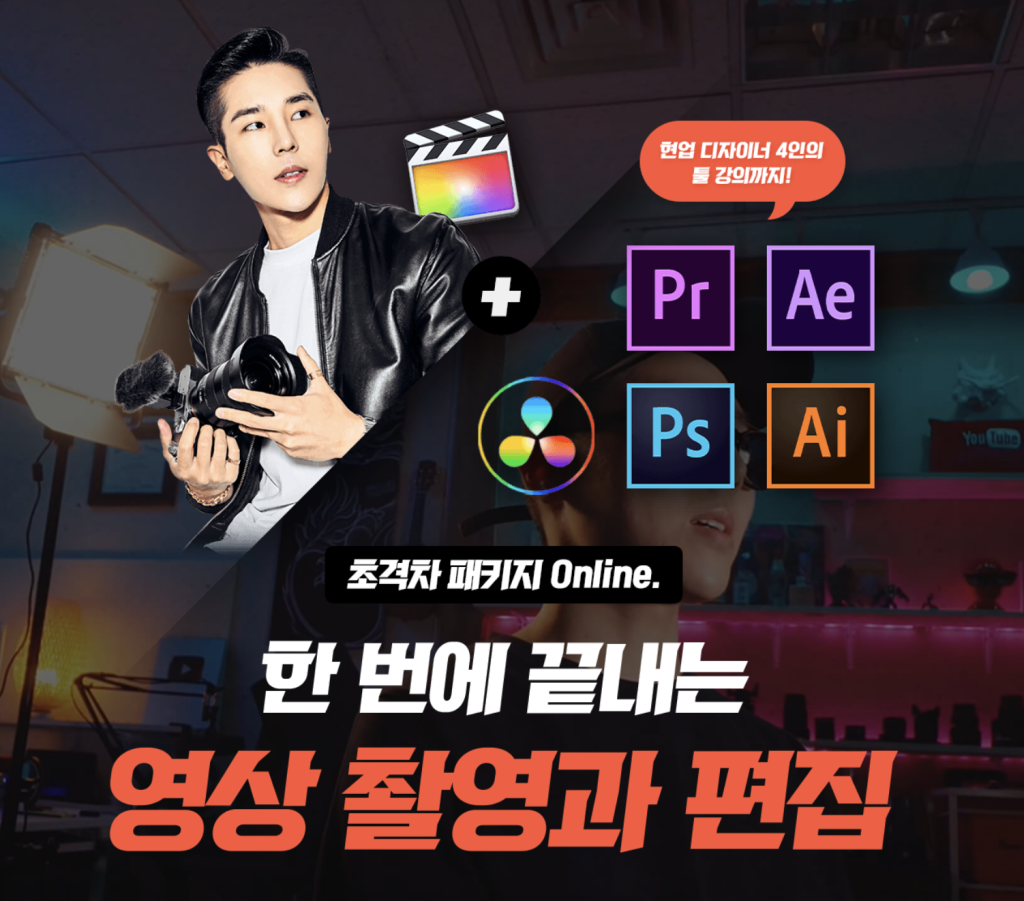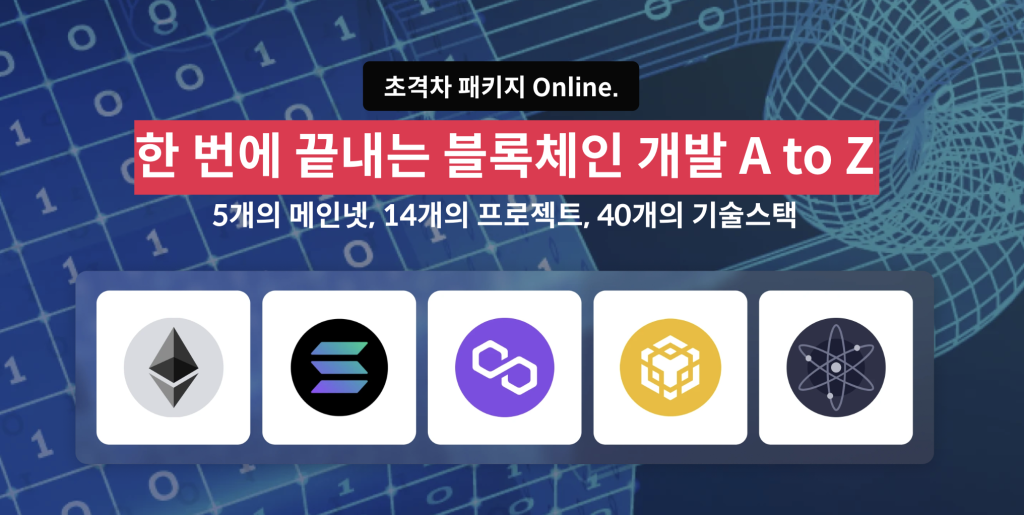Market Research: The Art of Digging Deeper for Success

Are You Conducting Your Market Research the Right Way?
From group projects in university to yesterday’s proposal, content planners spend their entire careers researching and analyzing the market. Market research is the cornerstone of any plan. Yet, when writing a proposal, it’s often brushed off as a mere introductory step. The more familiar the task or the closer it is to a previous success, the easier it is to overlook its importance.
While there’s plenty of technical advice out there on how to conduct market research, the mindset and knack for staying focused on what really matters can only be gained through hands-on experience. Today, we talk with J from FastCampus’s B&G (Blockchain & Global) team, who researches, discovers, and analyzes new markets more than 10 times a year.
The Fastest Course to Reach 100 Million KRW in Revenue
Changer Says:
“I was confident that Mastering Video Production & Editing in One Go would do well. The market still had untapped potential, and the way we packaged the course to cover the full spectrum of skills, plus bringing in content creator Yong Hosu, made for a competitive edge.”

J from FastCampus’s B&G team has a strong track record. In the world of online education, hitting 100 million KRW in revenue within two months is considered a success metric. J’s course, Mastering Video Production & Editing in One Go, achieved this in just eight days.
At the time, the video production/editing education market was visibly well-formed. FastCampus already had similar courses that were doing decently well.
But they weren’t dominating. With such a large market, there was plenty of room to capture a bigger share. By thoroughly analyzing existing offerings, J segmented the audience into two groups: those seeking professional-level skills and hobbyists. The professional-targeted courses were too difficult, while the hobbyist-targeted ones were too basic. J believed packaging a course that catered to both would secure a unique market position. Adding YouTube content creator and video artist Yong Hosu to the mix sealed the deal.
With a unique positioning and a popular instructor, the course’s success seemed inevitable.
Market Research is About Finding Alternatives
No matter how deep you dig, sometimes the perfect data just doesn’t exist. It’s not always due to a lack of research skills; sometimes, the data simply hasn’t been compiled yet. Even though there’s a vast amount of statistics available, some emerging markets haven’t been around long enough for formal studies. In these cases, you have to rely on “inferred” data and alternative sources.
Mastering Video Production & Editing in One Go is a great example of J’s perseverance in finding alternatives and reading market trends. While it was easy to gather data on the number of graduates from video-related academic programs, gauging the demand from hobbyists was trickier. As a workaround, J compiled a list of all YouTube channels offering hobbyist video tutorials, then analyzed subscriber counts and views.
The same applied to competitor analysis. Competitors rarely disclose product- or service-specific revenue figures beyond basic indicators. Fortunately, for B2C services, public metrics like likes, reviews, and algorithm-based rankings provide clues that can be crawled and analyzed.
Market research doesn’t end with a few Google searches. It requires relentless dedication to finding meaningful data.
When Data Fails, Insight Prevails
Changer Says:
“After the huge success of the course with Yong Hosu, I started thinking that subscriber count equaled sales. But I quickly learned that while an influencer’s impact is important, it guarantees nothing.”
Off the back of Mastering Video Production & Editing in One Go’s success, J formed a hypothesis: the more YouTube subscribers an instructor has, the higher the course sales. This led J to recruit instructors based primarily on subscriber numbers for the next few video courses. Everything seemed easy—internally, the projects were greenlit without a hitch, supported by what J thought was a proven hypothesis. But the results were disappointing.
By focusing too much on subscriber counts, J overlooked the limits of the instructors’ content style and ended up with weaker course structures.
“I spent so much time securing the instructors that I didn’t put enough effort into building a solid curriculum. Ultimately, the course quality boils down to the strength of the curriculum.”
Intuition is Not Evidence—It’s Motivation
J now leads the B&G team, where he’s spearheading a new blockchain-focused project. The team’s goal is to develop high-quality courses on blockchain technology for global distribution. But was this new venture really a result of careful market research? Right after the team was formed, a major blockchain company collapsed, and several multi-billion-dollar coins were delisted. Even so, the B&G team launched their courses.
FastCampus’s decision-making process can be boiled down to three key questions:
- Is the market big enough?
- Will the market grow?
- Can we produce something more competitive than the products currently in the market?
Changer Says:
“With the collapse of the coin market, funding dried up, hiring slowed, and a lot of people exited the space. We had serious concerns about whether our content would succeed in such an environment. Even the existing blockchain courses weren’t performing well.”
Despite the uncertainty, J wasn’t ready to give up. His intuition was strong, but intuition alone wasn’t enough to move forward. He revisited the second question:
Will the blockchain market grow?
The answer was yes—supported by data. According to KPMG, the global blockchain market is projected to grow at a compound annual rate of 67.3% from 2018 to 2024, exceeding $23.5 billion. Revisiting the numbers gave J confidence. Leading firms like JP Morgan and Goldman Sachs were entering the crypto space, and platforms like Google and Instagram had begun integrating blockchain technology. The market, though battered, was on the path to recovery and transformation.
The market sentiment wasn’t great, but J addressed that by focusing on the quality of the content. Existing blockchain courses covered too narrow a scope and lacked depth. J’s team aimed to create courses so comprehensive that they wouldn’t just compete with other blockchain courses—they’d outshine anything else in the online education market.
In the end, J’s decision proved right. They surpassed their initial revenue goals, and their success in Korea—one of the world’s leading blockchain markets—suggested a strong potential for international growth. It was J’s determination to find “why it will work,” backed by rigorous market research, that turned his gut feeling into a success.

In the End, It’s All About Meeting People
The most important action the B&G team took while preparing their blockchain courses was interviewing industry professionals. While there’s plenty of available data on blockchain, the information needed to create educational content was sparse, and the insights from people in the field often differed significantly from the documents J found online. The rapid pace of technological change meant written materials lagged behind current trends.
Changer Says:
“There’s this moment when you’re interviewing someone, and suddenly the dots connect. The questions I had during market research, the parts I couldn’t quite figure out—they all come together.”
Comparing the initial outline of the blockchain courses with the final curriculum, the differences are stark. Industry professionals essentially acted as market research validators, helping determine the credibility of the data J had gathered. No matter how much research you do, meeting people is key.
✍️Key Takeaways
- Market research requires persistence. To find meaningful data, you need to think and rethink your approach until you get results.
- Numbers derived from market research are just one piece of the puzzle. The success of your content relies on much more than numbers.
- Intuition is important, but it’s not evidence. Use it as motivation to explore further and validate your ideas.
- Meeting people in the field can provide insights that data alone cannot.